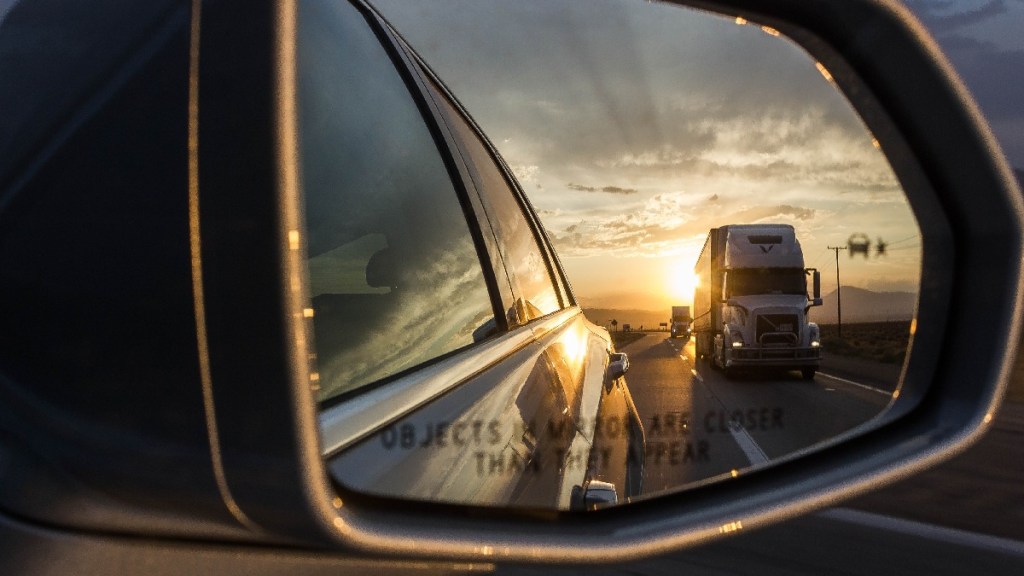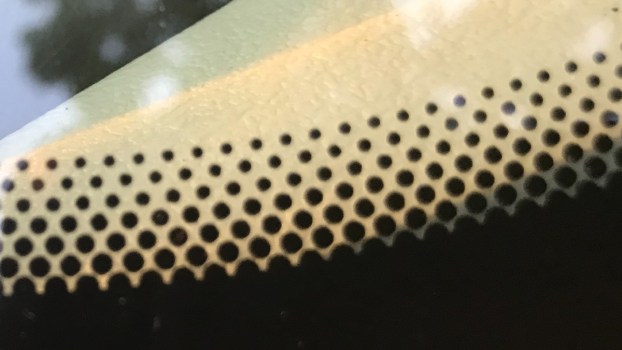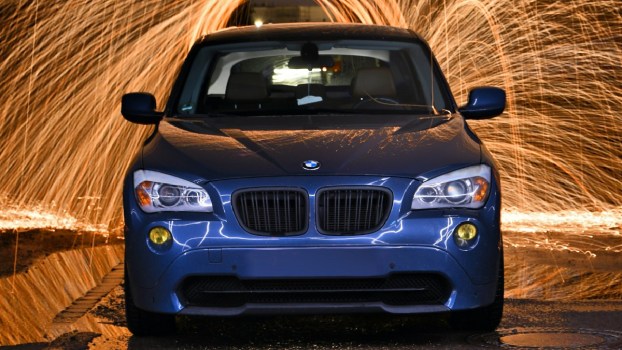
Why Are Objects in a Mirror Closer Than They Appear?
With the countless hours that many of us spend in cars, it’s easy to take common vehicle features for granted. For example, previously, we covered why there are small black dots on a windshield. Now, we discuss another familiar feature, the lettering on the passenger side mirror of cars: “Objects in mirror are closer than they appear.” For inquiring minds that want to know why this phenomenon happens, we’re here to help.
Reasons why objects in the passenger side mirror of cars are closer than they appear

The “objects in mirror are closer than they appear” lettering on the passenger side mirror of cars in North America is such a ubiquitous presence. As a result, many people haven’t even stopped to consider the meaning behind the lettering — or why this distance distortion occurs. It’s even become a catchphrase and part of the cultural fabric, a source of humorous fodder for memes, comic strips, cartoons, songs, movies, and other media.
However, if you ever looked at a car’s passenger side mirror and then turned back to view a vehicle behind you, you’ll see that this phenomenon actually happens. A vehicle can be close behind, but in the mirror, it appears farther away.
The lettering is there for safety reasons. Or, from an automaker’s perspective, it’s a disclaimer. All new cars in the United States and Canada are legally required to have the lettering. Other countries that have this disclaimer include India, Nepal, and South Korea. With the distortion of the distance perspective, drivers could potentially crash into another vehicle — mistakenly thinking that it’s far away.
However, the mirror design that creates this distance distortion is a safety trade-off, for it reduces the blind spot on the passenger side.
Convex shape of a vehicle mirror distorts the distance perspective

The primary reason why objects in a car mirror are closer than they appear is its convex shape. Convex is like a bowl turned upside down. Instead of a flat surface, a convex shape has a rounded bulge.
For a flat mirror, the light that creates the image bounces off it and goes in the same direction from which it hit, per HowStuffWorks. As a result, the object as it appears in our eyes is “reflective” of reality — no pun intended.
However, for a convex one, the curved shape alters the light’s behavior — especially farther away from the center of the bulge. The rays of light spread out, creating a distance distortion in our eyes.
Another reason for the distance distortion is the passenger side mirror is far away from the driver. This makes the objects appear small. Since the human mind judges distance according to the relative size of objects, an object that appears small in a mirror appears farther away.
Why don’t driver side mirrors have the disclaimer?
What about driver side mirrors? Why don’t they have the “objects in mirror are closer than they appear” disclaimer? Unlike the convex shape of the passenger side mirror, the driver side version is flat. It doesn’t distort the distance for the objects. Also, since the driver side version is relatively close to the driver, there’s a more accurate distance perception. However, the trade-off is there’s a larger blind spot on the driver side of a vehicle.
Cars in North America are required by law to have these two types of mirrors — convex on the passenger side and flat on the driver side. This setup differs from other regions in the world, such as Europe, where vehicles are allowed to have a convex shape on both sides. Instead of having almost no blind spot on the passenger side and a large blind spot on the driver side, this European setup results in only a small overall blindspot. This is because both mirrors simultaneously create a wider field of view.
New camera mirror technology
However, a new technology could make this safety trade-off a thing of the past. Mirror cameras, which are already in use in Europe, replace the traditional side-view versions. They eliminate the blind spots, as well as the distance distortion. Other advantages include lower wind noise and improved aerodynamic efficiency, resulting in higher fuel economy.
This camera mirror technology is currently under review by the Department of Transportation (DOT) and the National Highway Traffic Safety Administration (NHTSA) — and awaiting government approval.




